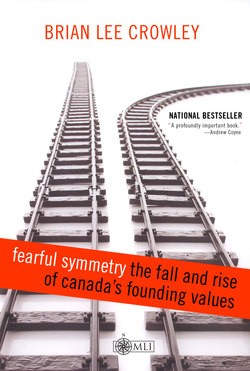Читать книгу Fearful Symmetry - the Fall and Rise of Canada's Founding Values - Brian Lee Crowley - Страница 11
На сайте Литреса книга снята с продажи.
Labour Shortages, Gryphons, Unicorns and Other Mythical Animals
ОглавлениеSociety is rife with self-corrective mechanisms that deal with emerging problems by giving people incentives to change their behaviour. Some economists, therefore, argue that the aging of the population is not really an issue worthy of much attention; these self-corrective mechanisms will kick in and our behaviour will be adjusted automatically by social and economic forces.38
For example, if workers come to be in short supply because of aging and retirements, wages will rise and companies will simply adjust by substituting capital for labour (i.e., retiring workers will be replaced by machines rather than younger workers) or by enticing workers to stay on past the current retirement age.39
If it is impossible for us to have labour shortages, however, the reverse proposition must also be true: it must be impossible to have unemployment. After all, from an economic point of view unemployment is just a labour surplus, whatever else it may be when measured in human unhappiness and suffering. Yet the historical record of large-scale unemployment over the thirty years from roughly 1970 to 2000 is there for all to see.
I grant that it is quite likely true that if labour markets are left alone to function, unemployment and labour shortages are equally unlikely. On the other hand, that is a big “if.” Much of our unemployment of decades past was not caused by the economy, but by bad decisions by politicians. And if we can create unemployment by bad policy, we can certainly create labour shortages the same way.
In the National Post, one could read in 2008 about how the retirement of Boomer-generation doctors was producing a nationwide shortage of physicians; the fewer physicians who were left were being reduced to gambits like holding lotteries to cull their patient lists, leaving millions of Canadians without a doctor.40 That shortage, however, was a direct result of government policy to reduce medical school enrolments some years earlier,41 a self-defeating scheme to reduce health care costs by reducing the supply of doctors.
If, in the face of a dwindling supply of workers, we cling to high levels of marginally useful jobs in the public sector, raise unemployment benefits and pensions in lockstep with rising wages, continue tax policies that discourage work, and keep up barriers to people moving to where the greatest opportunities are to be found, to pick just a few choice examples, we will, by our own choice, exacerbate the problem. After all, the self-corrective mechanisms that are the economist’s bread and butter in this case would be things like moving underemployed public sector workers, the unemployed, and those retired but still able to work back into the workforce. Raising wages is the way to do that, enticing people out of idleness and low-value occupations. It works poorly, however, if government policy battles you every step of the way. It is entirely possible for government policy to create simultaneous labour shortages and high unemployment. I see it every day in Nova Scotia, where I live.42
And even where the famous self-corrective mechanisms can be seen at work, that does not mean there is no pain or dislocation. Especially where self-correction is obstructed by bad policy, there is no guarantee that the new state of affairs will be as desirable as it could have been. For example, labour and capital are not perfectly substitutable—some jobs simply cannot be done as well, or even at all, by machines, so we cannot spend a lot of money and replace all our missing teachers and hockey players and physicians and restaurant servers with robots and other types of machinery. And the adjustment mechanism can take time to work, during which time labour shortages can exercise a powerful upward pressure on wages and thence inflation.
So self-corrective mechanisms can produce high inflation, high interest rates, and lower growth, especially when poor government policy gets in the way. That would be a destructive combination at the best of times. It would be brutal at a time when relatively fewer workers are striving to produce enough wealth to keep their own standard of living rising while they pay for at least part of the pensions, health care, home care, and a host of other public services for a growing number of retirees. In writing this book I have tried to think about how we, both government and Canadians, might adjust our behaviour so as to improve the chances of good outcomes for all of us in the face of the challenges represented by the aging and retirement of the Boomers.
In any case the classical economists who don’t believe in labour shortages and I are probably not all that far apart. I say that labour shortages will cause Canadians to change their behaviour profoundly over the next fifty years as we struggle to find ways to adjust to a precipitous fall in the numbers of new people entering the workforce. They say that tightening labour markets will produce big changes in the behaviour of Canadian firms and workers as wages rise to reflect the fewer workers that will be available.
Just remember the important point: we agree that profound changes are coming.43 Canadians are entering a decades-long time that will be economically, culturally, and socially as different from the last half century as vinyl records are from MP3s and rotary phones are from Blackberrys.
